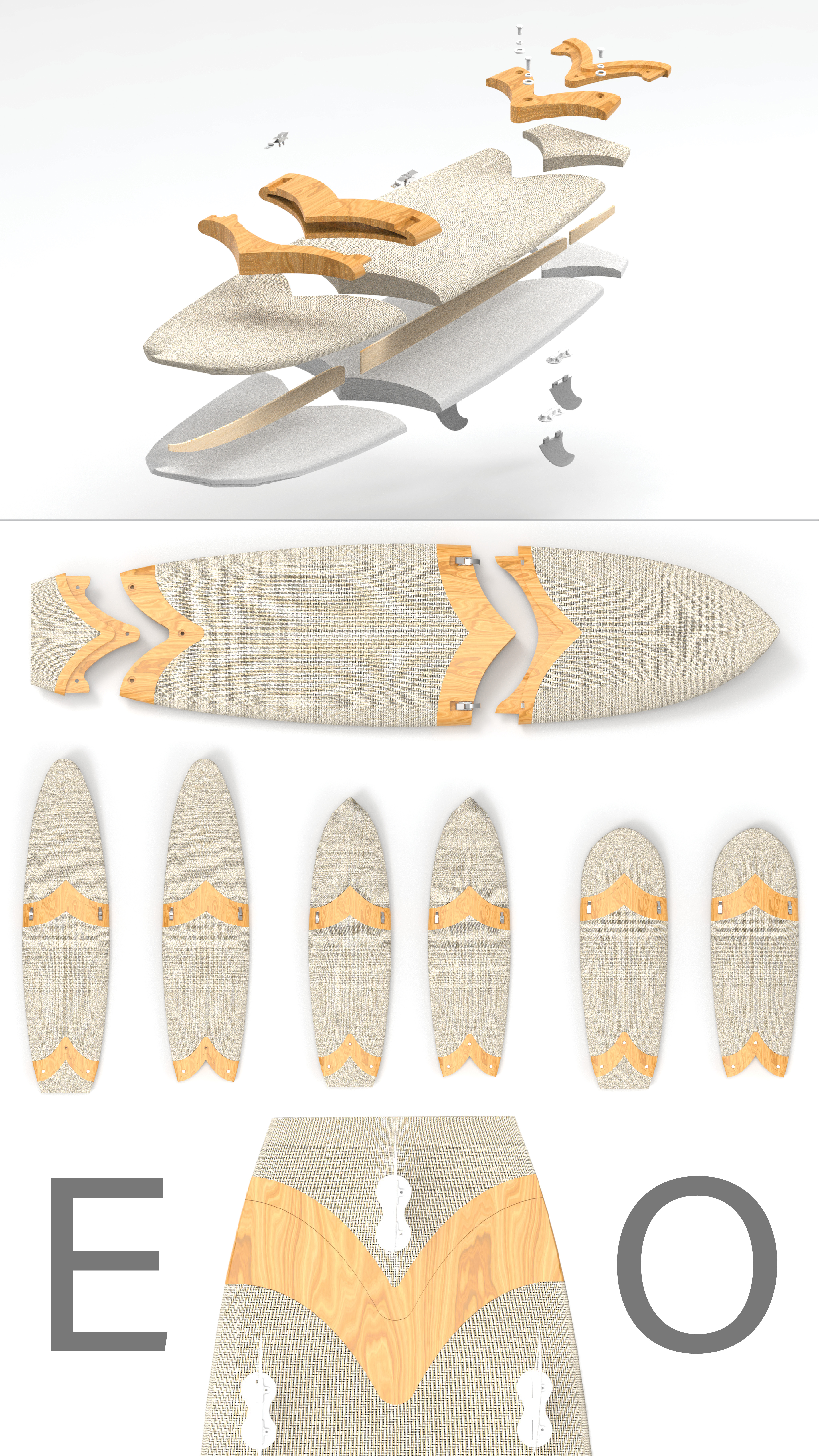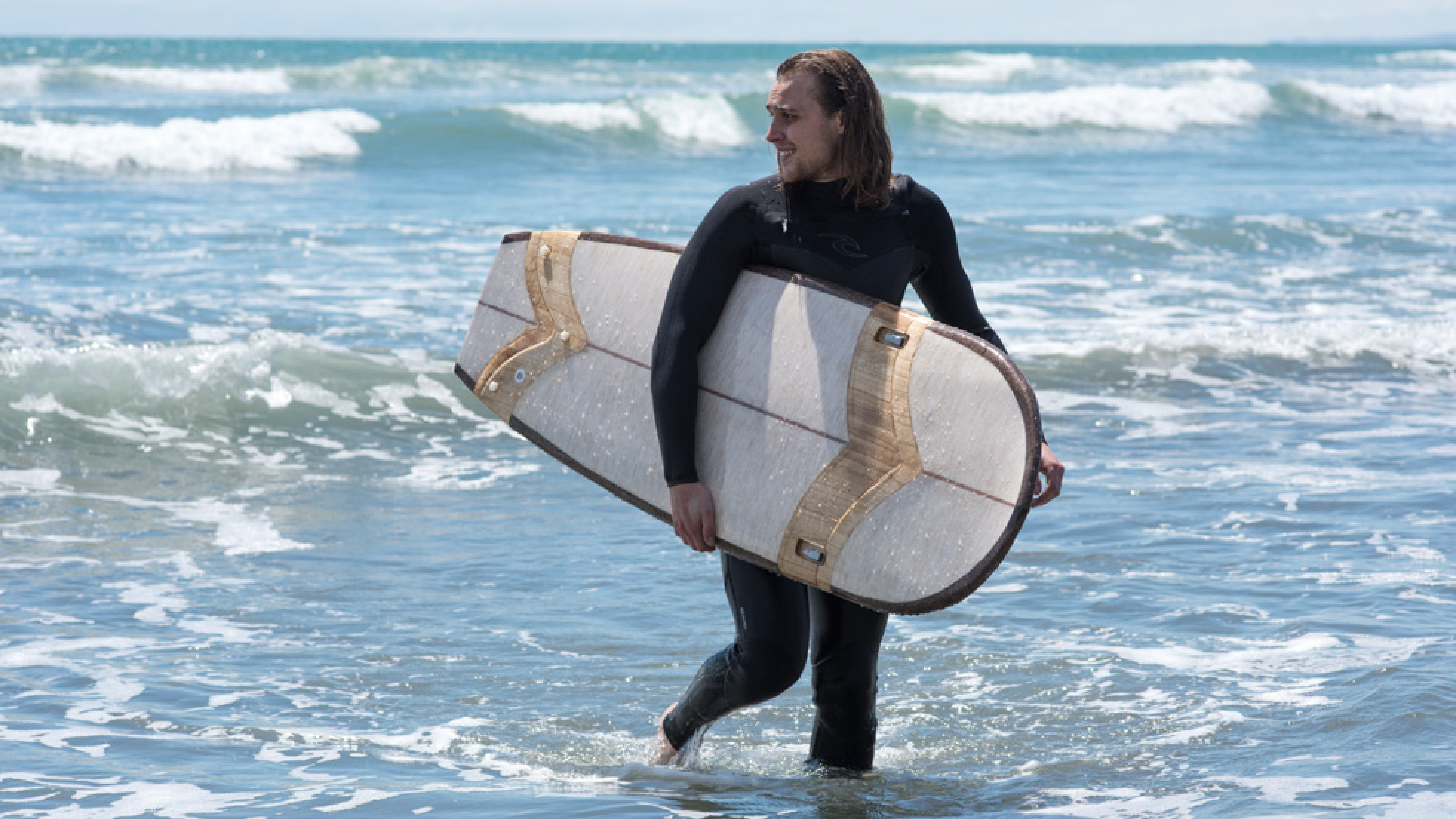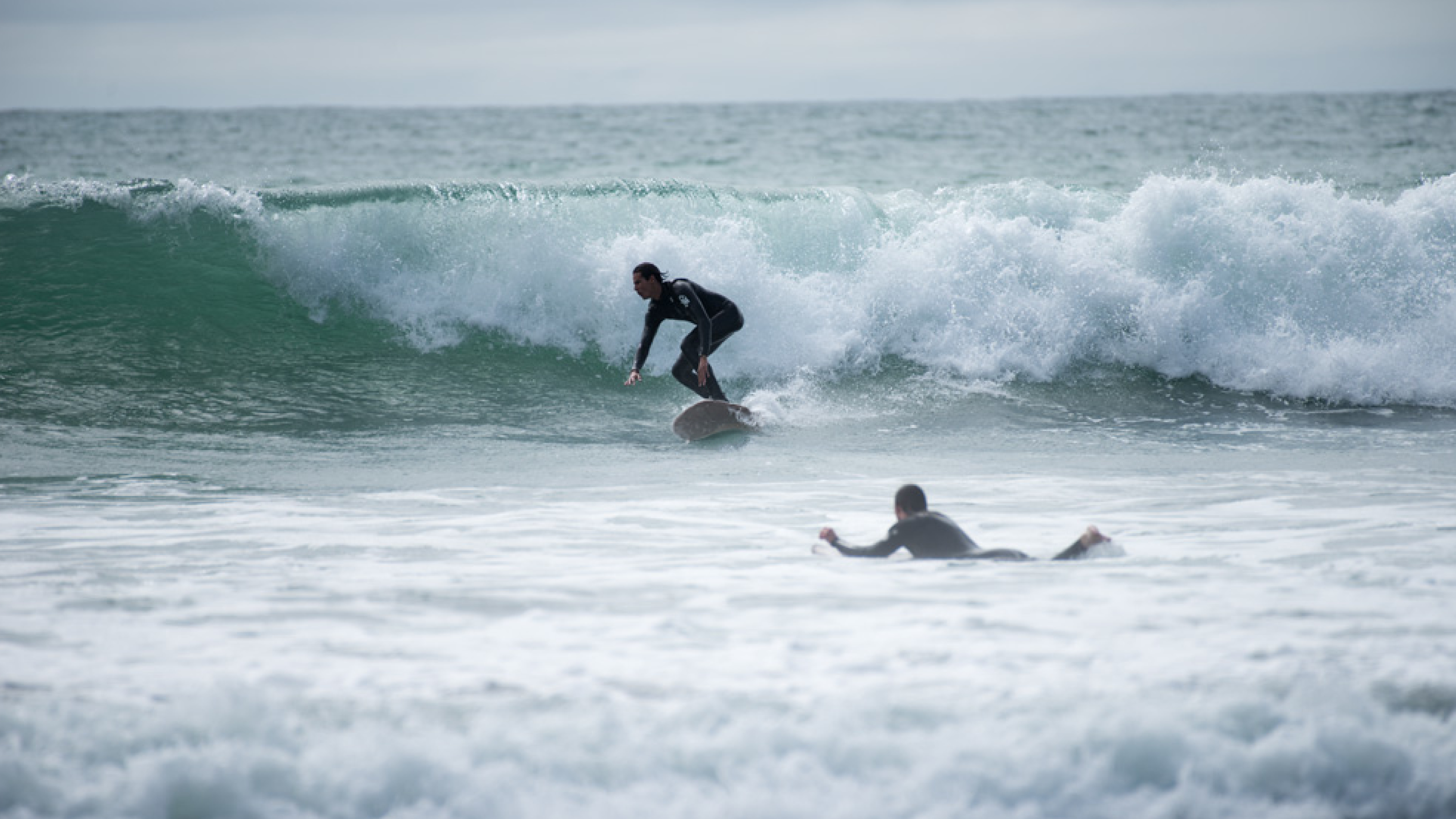
Jonathan Van Nes
EVO - The Future of Surfing
- http://www.noesurfcraft.com/
- http://jdubsurfboards.co.nz/
- https://www.linkedin.com/in/jonathan-van-nes-3600511b7/
EVO Modular Surfboard
In the last five years the population of surfers has been increasing exponentially, by 12% (“Wavegarden | Why Create a Surf Spot?”, 2020) each year, with an estimated 35 million surfers around the globe (Ross, 2019).
Currently, an estimated 400,000 - 600,000 surfboards are produced each year (Dodds, 2020). Toxic petrochemicals are the primary materials used to make these boards. It is estimated that 170kg to 250kg of CO2 emissions are released during the manufacturing process of each board (“Surfboards and their hidden environmental impacts”, 2020). The average surfer owns about four boards which, apart from the environmental impact, can take up a lot of room when stored at home or transported.
With an increasing number of new people taking up the sport, I wanted to focus my project around a surfer’s experience, from beginner to intermediate level. There are many obstacles along the way, such as storage and transportation, and there is more to learn about surfing than just how to stand up on a surfboard. This product aims to meet the user’s needs while supporting a more environmentally responsible ‘new wave’ of surfers.
For beginning surfers, it can be confusing trying to figure out which board to buy. Factors that contribute to the performance of a board include:
- Length
- Width
- Thickness
- Nose shape
- Tail shape
- Rail shape
- Rocker (curvature of the bottom of the board)
- Fin configuration
- Channels and contour of the bottom of the board
- Material
The EVO board provides a pathway of board shapes that evolve with the user, matching the needs of their progression as the user’s ability advances. It starts with a mini-mal (longboard) shape, moves on to a funboard (mid-length), then a fish board, and finally ends up at a groveller shaped board. As the length of the board shortens, it becomes more suitable for different wave heights, from small to mid-level waves.
Having the ability to reduce the board down to three pieces makes this board easier to store at home and transport to the beach. It will easily fit into a closet or under the bed, as well as in the boot of a car, eliminating the need for roof racks or the flattening of backseats. Once you master all of the different shapes, you can change the shape according to the surf conditions without having to bring up to 4 different surfboards to the beach.
To assemble the board, all you need to do is insert the nose component into the body component and flip the latches to secure the pieces together. The tail component is inserted into the other end of the body and is secured by means of bolts. Now you’re ready to surf!
It is estimated that ’80% of surf equipment comes from the petrochemical industry’ (Surfboards and their hidden environmental impacts, 2020), so rather than using standard oil-based materials, I turned to recycled and more natural and sustainable alternatives. The EVO board uses the same body section and can be changed to three staple board shapes. This reduces the amount of material used by 75%, reducing waste in the long term. Recycled polystyrene is used for the foam core and recycled Nylon for the bolts and fittings. New Zealand Paulownia timber is used for the connection parts, Super Sap epoxy bio-resin for the outer coating, and natural flax fiber cloth instead of fiberglass for the finish.
By using natural and waste materials while reducing the amount of material used, this board is taking a step in the right direction for a more sustainable future.
References:
- Wavegarden | Why Create a Surf Spot?. (2020). Retrieved 23 July 2020, from https://wavegarden.com/why-create-a-surf-spot/
- Dodds, D. (2020). 7 Tips to Lessen the Impact of Your Surfing on the Ocean - Wave Tribe | Share The Stoke ®. Retrieved 22 July 2020, from https://www.wavetribe.com/blogs/eco/7-tips-to-lessen-the-impact-of-your-surfing-on-the-ocean
- Surfboards and their hidden environmental impacts. (2020). Retrieved 21 July 2020, from https://davidweber.com.br/en/blog/surfboards-hidden-environmental-impacts




